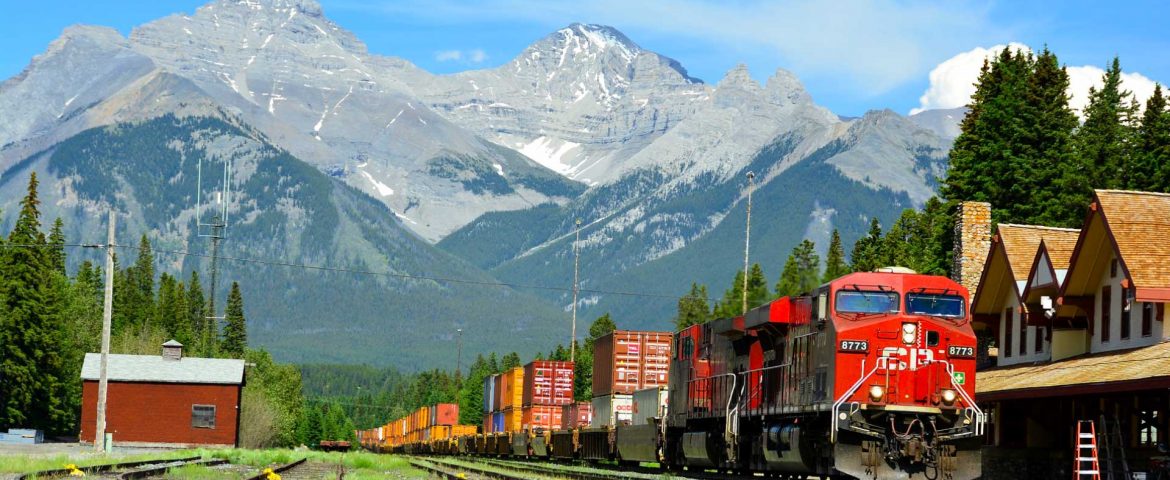We all see trains go by, but most don’t understand the scope of the US rail industry and the important role it plays in the greater economy.
The US railroad industry is massive at around $68.5 billion per year! And employs around 135,000 employees just in US freight railroads, but total direct and indirect US rail impact comes out to over 1 million jobs.
US Class 1 freight railroad employees have an average salary of over $90,000.
Total rail network mileage has changed over time. Climbing upwards from the 1800s-1930s and trending down over time since then as trucks have become a dominant form of ground transport. In total, there are more than 140,000 miles of railroad track in use in the United States alone.
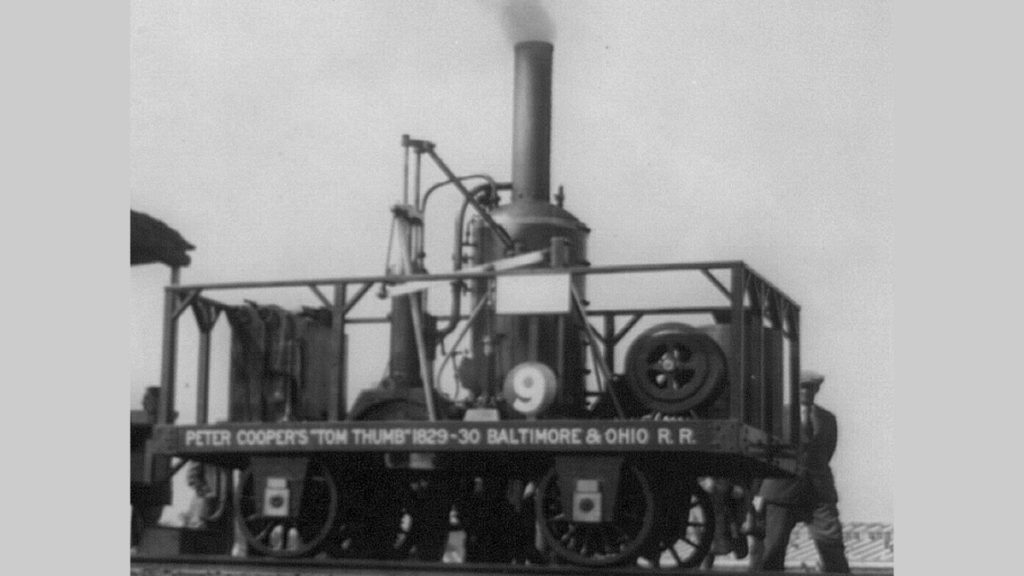
1830 – First passengers pulled by a steam locomotive in the USA. Typically the Baltimore and Ohio railroad is considered the first railroad. The B&O was actually started in 1827, but used horses pulling carts on rails for the first couple of years. The South Carolina Canal company is also one of the earliest, this later became the Southern railway which then became Norfolk Southern.
31.7 million passengers rode on Amtrak trains in 2018. Of course with the ongoing Covid-19 pandemic, passenger train ridership has fallen. As Amtrak improves schedules and offerings, expect this number to rise.
US freight cars weigh anywhere from 50-100 tons, while semi-trucks can carry 22 tons of freight.
On Average freight moved by US railroads travels a little over a thousand miles.
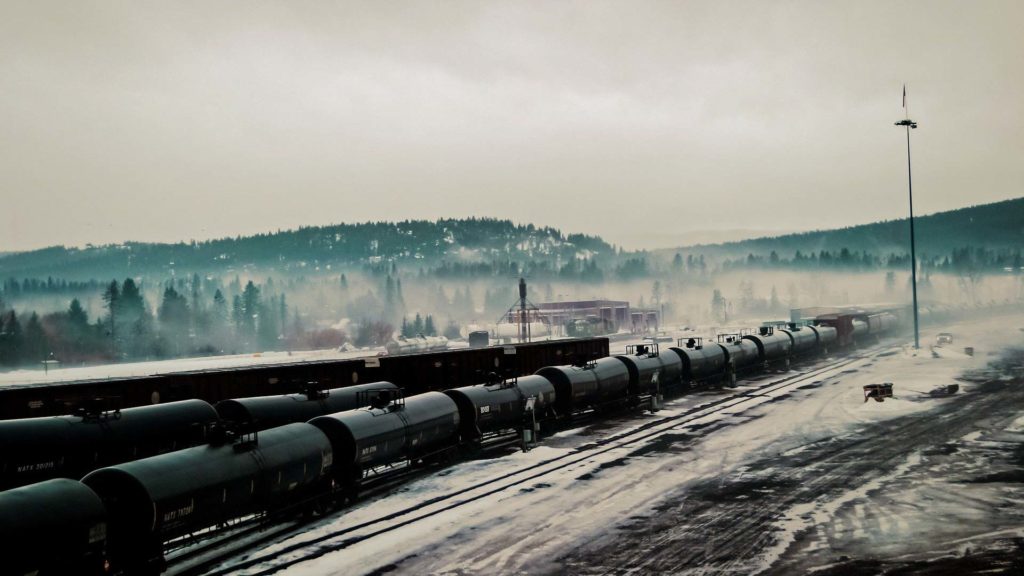
Average price vs truck – Depending on the type of freight, rail transport can be between 10-35% less costly, with the biggest cost savings being on long routes and bulk materials such as coal and oil. US railroads move over 25% of all grain produced in the US, which is more than 1.7 million railway carloads annually. Over 200,000 carloads of crude oil were moved via rail in the US as well in 2019.
Most powerful steam locomotive
It’s hard to imagine now, but steam locomotive technology was cutting edge from its inception until the 1930s. Steam locomotives were continually developed as a technology to move more and more freight at higher speeds. By the 1940s the steam locomotive had matured into immensely powerful machines.
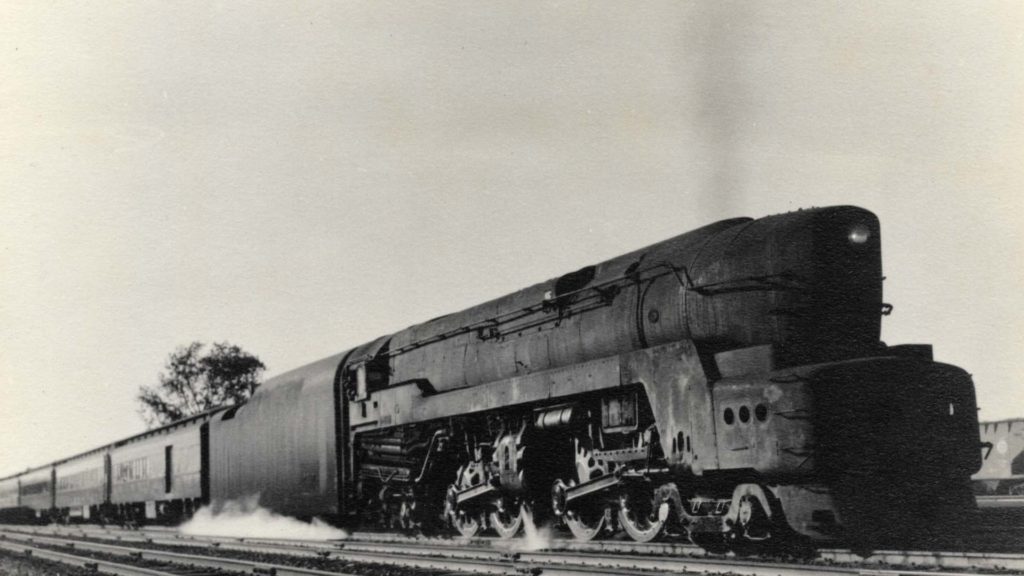
But What was the largest steam locomotive? Well, it depends on how you measure it.
In terms of length, the big boy at 132ft long is often cited as the certain locomotives developed more traction than the big boy and others weighed more. Several of these large locomotives including the UP’s Big Boy generated over 6,000 horsepower at peak output.
The big boy was designed to handle the massive amounts of freight the Union Pacific had to move during WW2.
Over the years diesel-electric locomotives have also evolved and developed, becoming increasingly powerful and efficient. An early advantage that diesels had over steam power was they required less maintenance, fewer fueling stops, and are capable of MU operation- meaning that multiple diesel locomotives can be hooked together and operated by one crew from the front locomotive.
Modern diesel-electric locomotives generate anywhere from 3,000-6,000hp, often using AC traction motors, with modern turbocharged diesel motors, electronic controls and computer-controlled systems.
They might not be as heavy as some steam locomotives but they can be lashed together and pull huge trains while being highly efficient.
A crew of 2 or 3 can operate a 2-mile train that weighs 20,000 tons.
Fuel Efficiencies
Trains facilitate international Trade with around 30% of all imports moving by train at some point on their way to the end consumer. This could be raw materials or finished goods.
1 gallon moves 1 ton nearly 500 miles! Railways are the most efficient form of overland transportation
Experimental – hydrogen, hybrid and electric
As railroads continue to invest in more modern technologies to move their trains, experimental locomotives have been created that run on hydrogen-powered engines, diesel/ battery hybrid systems and full-on Tesla-like electric locomotives. “Self Driving” technology is slowly being tested and developed. Long term it is possible that railways will move towards 1 man crews on certain types of trains and routes.
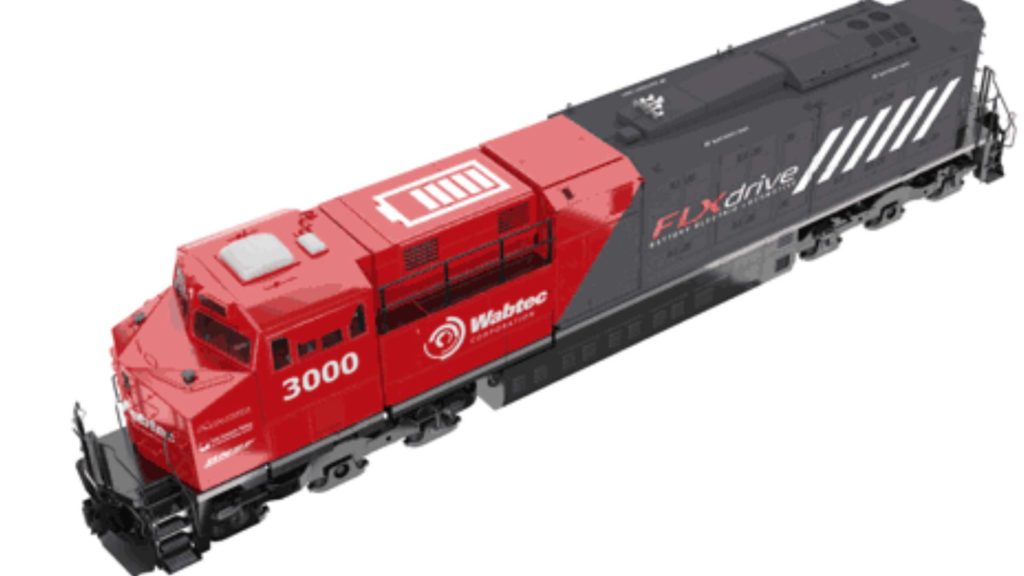
The issue with full-electric power is the energy density required to operate a train over long distances would quickly empty even massive batteries. The most promising experiments have been using a diesel locomotive paired with a battery locomotive. As the combined locomotive goes down a hill, it can partially recharge its battery, then when power is needed, the battery-powered locomotive can then be operated as a boost for the diesel. Thus hopefully replacing two diesel locomotives with one diesel and one electric battery locomotive.
Amtrak speeds
Highspeed rail projects in the USA
The USA certainly isn’t known for its high-speed rail lines, but Amtrak does operate passenger service on over 21,000 miles of track spanning coast to coast. Amtrak speeds vary but range anywhere from 79mph to 90mph to over 125mph on its Northeast Corridor system.
There are a number of true high-speed rail projects in planning stages, including expanded routes on the Northeast Corridor, Texas, New York, California and a route from Washington DC to Atlanta.
The major obstacle to high-speed rail in the US is the sheer amount of financial backing a project takes over decades to complete it. Highspeed trains operating over 125mph really shouldn’t be operated on the same tracks that much slower-moving freight trains are operating on. So for new high-speed routes, a dedicated new right of ways and track must be constructed.
An example of this is the Brightline system in south Florida. While Brightline does share some segments of track with the Florida East Coast railroad, it is building dedicated ROW west towards Orlando.
Brightline will operate up to 125 mph using diesel locomotives.
Before the time of airlines and private jets. Passenger trains were major bragging rights by the railroads. Railroads up until the 1960s took a huge amount of pride in their passenger trains, with each railroad typically having a “flagship” passenger train that was featured in advertising.
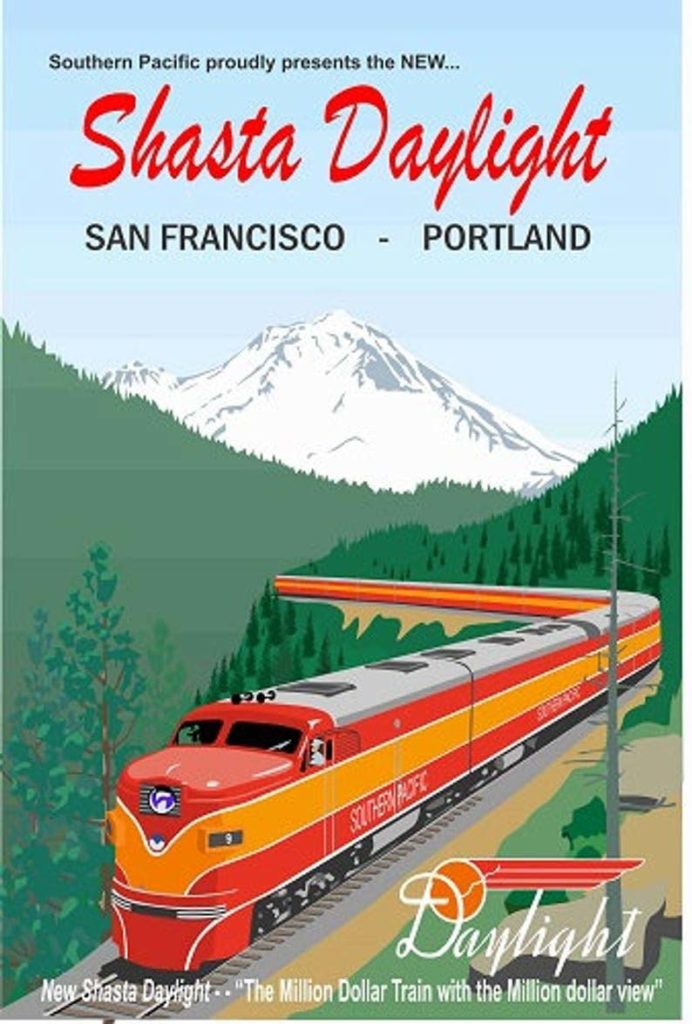
Instead of private jets and business aviation, industry tycoons and the affluent often had private Pullman railroad cars that were highly luxurious and served as mobile hotels and offices.
While trucks and trains do compete against one another in many regards, they also complement each other when applied correctly to large supply chains. Trains are much more efficient at moving bulk cargo and in general on long haul routes greater than 500 miles in length.
It would take hundreds of trucks to move the same amount of grain, plastic pellets, or other bulk commodities that 2-3 diesel locomotives can move. The result is that there are hundreds fewer trucks polluting and congested highway systems for every long train you see.
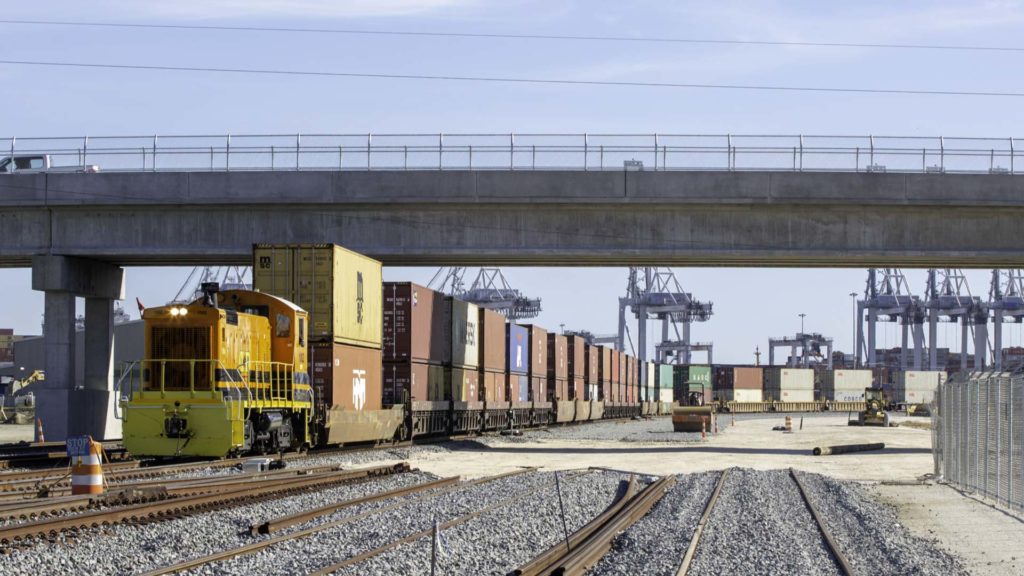
Major retail chains like Walmart and Amazon Use intermodal
You might not realize it, but a significant portion of goods you see in stores move via intermodal rail containers from ports to distribution centers or simply between domestic locations. Often intermodal shipping in combination with short-haul drayage is used on long haul shipping lanes where the railroad can provide significant cost savings when compared with over the road trucking services.
Amazon and Walmart are both examples of major retail firms that have purchased their own intermodal containers. Many other major retailers ranging from Home Deport to Dollar General work with intermodal shipping companies to move their freight.
Likely going forward, more and more retail chains will continue to add intermodal shipping to more lanes and as a greater percentage of their overall freight due to cost and energy savings.
Trains play a crucial role in national defense. Railroads are one of the only ways to efficiently move large military vehicles like tracked tanks across the country to ports for deployment or to training areas. The US military has a dedicated logistics team that is well versed in loading and unloading military equipment from railcars.
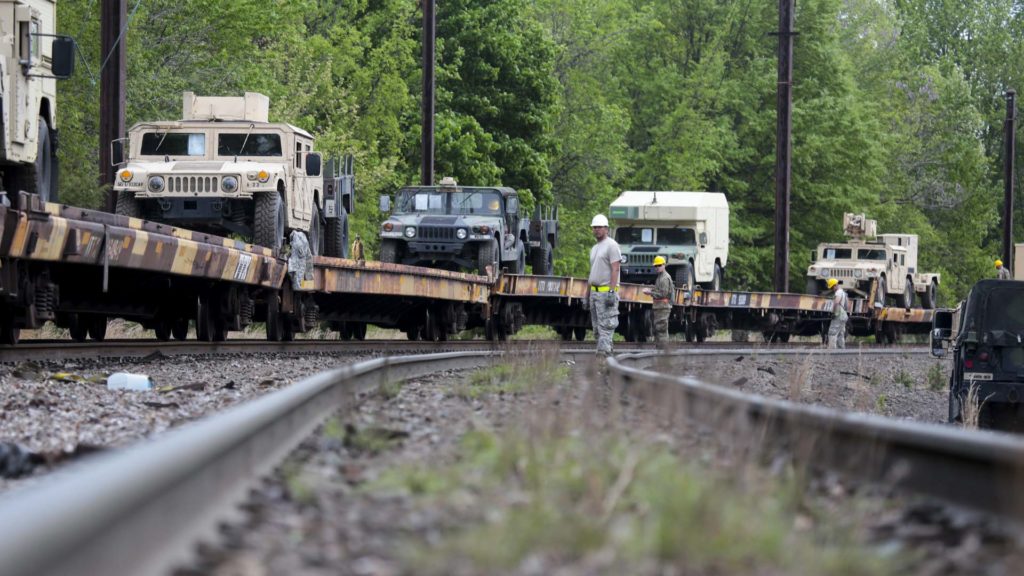
Want a free lane and cost savings analysis? – Get in Touch!
Zmodal is a top intermodal shipping company providing door-to-door intermodal, and full truckload services nationwide throughout our digital supply chain dashboard which provides easy route searching, booking, document management, and analytics. CONTACT US if you want to lower your supply chain costs or want access to North American intermodal capacity.
Recommended for Further Reading:
https://www.aar.org/wp-content/uploads/2020/08/AAR-Railroad-101-Freight-Railroads-Fact-Sheet.pdf
https://www.ibisworld.com/industry-statistics/market-size/rail-transportation-united-states/
https://www.bts.gov/content/system-mileage-within-united-states
https://gaports.com/photography/gpa-reaches-mega-rail-milestone/
